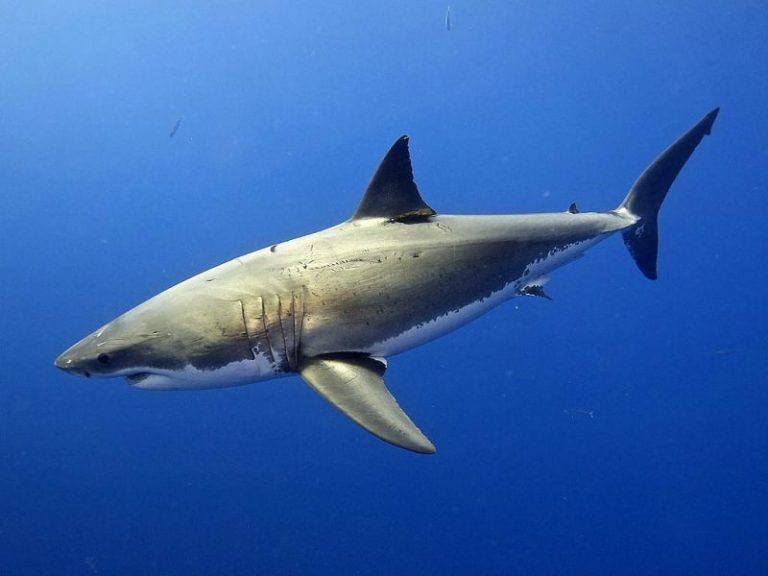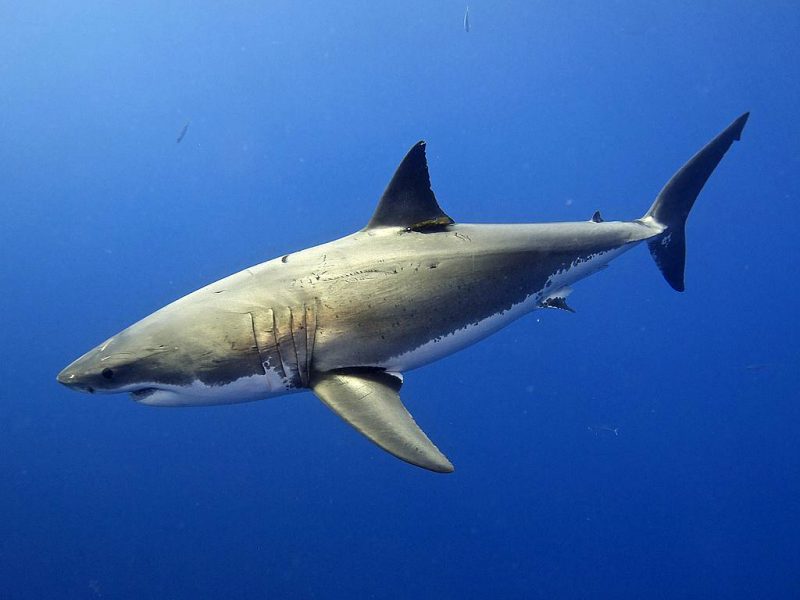Divers associate great white shark encounters with northern Mexico and southern California, but numbers of the sharks spotted in the north of the state have risen by more than a third over the past decade, according to a newly published study.
Researchers monitoring the “Red Triangle” population located between Monterey Bay, the Farallon Islands and Bodega Bay say that the increase of as much as 35% indicates gradual improvements in Pacific Ocean conditions.
Between 218 and 313 adult and sub-adults are estimated to be based in the area. Sub-adults are immature sharks but big enough to eat large marine mammals.
“A healthy population of white sharks means there are healthy populations of the sea-lions and elephant seals they eat,” Montana State University marine ecologist Paul Kanive, the study’s lead author, told the San Jose Mercury News. “And that means that the lower levels on the food-chain, like fish, are healthy enough to support the marine mammals.”
The shark population is however unevenly balanced between the sexes, with 60% being male.
Researchers at Stanford University and Monterey Bay Aquarium tag and track the sharks electronically and have collaborated with other scientists to photograph individuals from above and below the surface and compile a database.
The latest study, which began in 2011, is based on more than 2500 hours of baiting the water from boats and capturing 1500-plus photographs focusing on the sharks’ distinctive dorsal fins. The previous study, published in 2011, had provided an estimated population range of 130-275 sharks.
The hike in numbers is attributed to the 1972 Marine Mammal Protection Act, which ended the hunting of shark prey such as seals and sea-lions; and two state laws, the first in 1990 ending gillnet fishing and the second in 1994 outlawing the killing of white sharks within three miles of the coast.
28 May 2021
Great whites stay in the Red Triangle between September and February, but then become vulnerable to fisheries when they make the 3000-mile round trip to the “Shark Cafe,” area between Hawaii and Mexico, probably to mate. The study is published in Biological Conservation.
In February Divernet reported on Monterey Bay Aquarium’s finding of increasing numbers of the juvenile white sharks usually found further south turning up in the Red Triangle. The tagging data obtained over the past 20 years indicated that climate change was altering the sharks’ behaviour, forcing them to move to cooler water.
Recent temperature extremes – Monterey Bay seawater heated to as much as 21°C against an average of 13°C last summer – had been accompanied by unprecedented numbers of juveniles, and a related fall in populations of their prey such as salmon and sea-otters.



